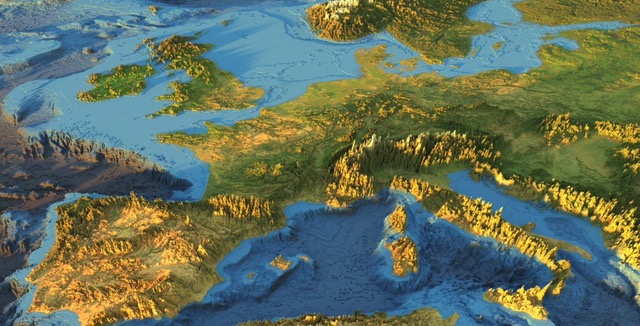9th Jan – 12th Jan 2022
There are many small towns in the rural hinterlands of the USA that are long past their glory days and are being slowly but surely abandoned by the communities that once thrived in them. Industries fail, businesses close and unemployment drives people away. Farms become unproductive. Buildings and homes are abandoned, ancient shop fronts and gas stations are boarded up and the fabric of a place slowly disintergrates until there is nothing left to qualify it as civilisation.
Marfa is a place that could have been a victim of this inextricable decline but it has been saved by an unlikely medium. Modern art.
Marfa has been in existence since the 1880s because it became a ‘water stop town ‘ for the new railroad. This is a place where the steam engines could take on essential water but not important enough to warrant having a station. These towns were known as ‘jerk-towns’, a colloquialism coined by virtue of the fact that the flow of water from the swinging arms that connected to the water bowsers was started by the ‘jerk’ on a chain. The town quickly grew in the 1920s, hosted several thousand trainee pilots at the nearby Marfa Army Airfield during WW2 but started a gradual decline after this. It has provided gritty back drops for several movies, including the 1956 James Dean film Giant, and 2006’s No Country For Old Men.
The town’s rennaissance via art started in the 1970s when a New York minimalist artist, Donald Judd, relocated to the town and created some large art installations here. Art has attracted visitors and artists which has created a positive feedback loop of a slow snowballing of investment, renovation and reclamation of the town’s buildings and spaces. There are art events, theatre productions and an annual music festival every year. The people that come here are attacted to its retro vibe, adobe architecture and all the improvements seem to strive to preserve its authentic patina. To cater to the influx of visitor money there are some nice restaurants and shops (all seemingly selling the same sort of artisanal and achingly cool stock) and the town is littered with small galleries as well as there being the ongoing installations of the Chinati Foundation, the organisation that manages Judd’s legacy and works.
All these factors were why we had opted to come to Marfa for three nights. We had had a day trip here from the nearby Fort Davis in late 2018 and had agreed that it was a place in which we would love to spend some more time.

The road into Marfa throws some clues as to its arty credentials when about 30 miles from town one comes across ‘The Prada Shop’. This is a mock Prada store front that is a pop art exhibit. It is in the middle of nowhere and quite surreal. Further down the road we passed the Tethered Aerostat Radar System, a tethered blimp that gets raised to watch for border crosser activity. It was deployed as we drove by so my photo is less impressive than this stock photo that I found online.


Our park in Marfa was called the Tumble In and had the requisite levels of windswept dustiness. It was a bit of a self-serve affair with a tiny orange caravan as the unmanned office at the entrance and a camp host that spent most of his time at the local hostelry. It did however have one of the town’s art intallations on site which looked like nothing until darkness fell.


The Tumble In was an easy 1/4 mile stroll from Marfa’s centre, and as usual, we were the only ones walking the route. We spent our days wandering around the town, searching out the interesting buildings, old signage and street art. Unfortunately, this being the start-of-the-week, post-holiday-season, mid-winter almost nothing was open. All the galleries, a lot of the eateries and the Chinati Foundation sites were all closed. This was a bit depressing initially but we persevered and found a few little gems to keep us happy:
Marfa Burritos. The clue is in the name. Anthony Bourdain ate here on his travels whilst filming Parts Unknown and it seemed as good a reason as any to do the same. The building was very unprepossessing and covered with handwritten graffitti inside and outside. There were only 7 choices of burrito, all the size of a small forearm, and the two that we shared were muy delicioso! Nick added his words of appretiation and wisdom to the wall above our table in green marker pen. We could have made this a daily visit but wisdom prevailed.

A coffee shop called Sentinel with half decent coffee and a lovely sunny sheltered outside area populated by a few loud, youthful looking, ‘zooming’, work-from-anywherers, mostly sporting beards and plaid shirts. This earned itself a few visits and one day we passively learnt a quite a bit about the expansion of an icecream shop business.
A fantastic little independant food store called The Get Go Grocery in which we found some very acceptable French cheese and wine. In the Texas desert. Impressive.

The Marfa Wine Company. We discovered this ‘wine shop and patio’ during a mid-afternoon, directionless meander down a back street. It occupied a perfect sunny spot with a table and chairs on a deck and we felt it would be rude not to have a glass of rosé. Unfortunately the girl managing the shop informed us that she only sold wine by the glass at the weekends, but we were welcome to buy a bottle…need I say more?

Marfa is a very photogenic place and now I will bore you with some of our snaps.







Here are some less arty photos of me waiting for the train to pass through town and me with some actual tumbleweed that blew into me. Oh, and another sunset shot.




